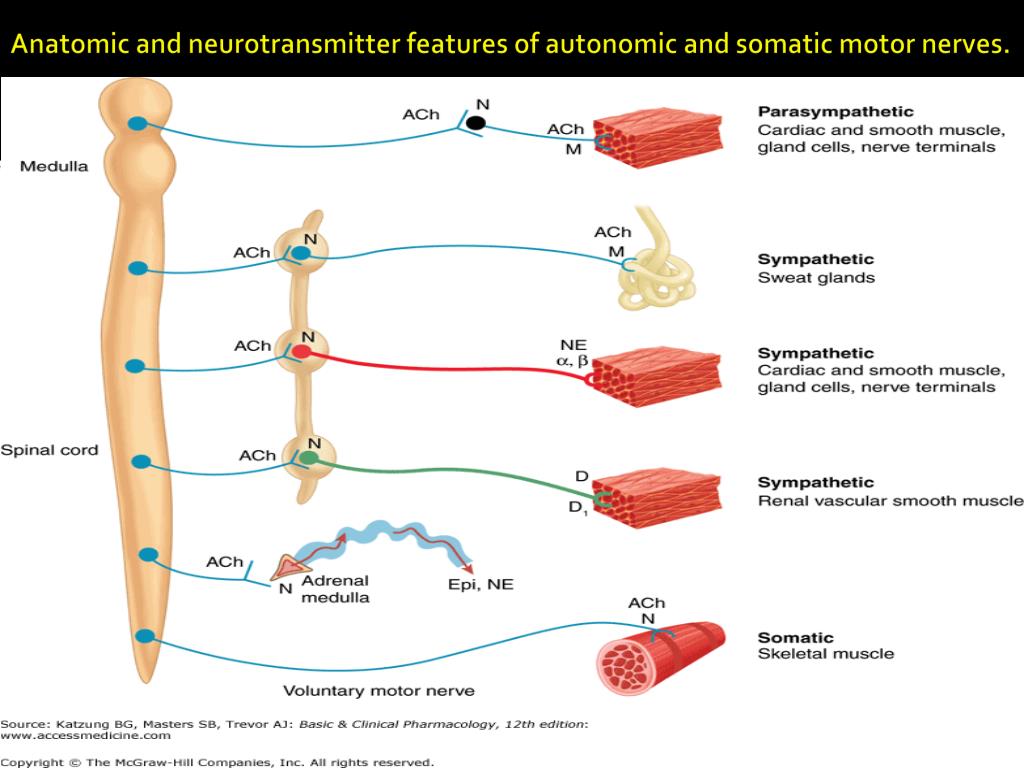

There are two categories of cells found in the nervous system: neurons and glial cells. Those functions are automatic and involuntary as controlled by the autonomic nervous system. In contrast, we cannot consciously control the smooth muscles of the intestine, heart muscle, or secretion of hormones.The somatic system is under our voluntary control such as moving our arms by consciously telling our muscles to contract.The major difference between these two systems pertains to conscious control. The second efferent system is the autonomic nervous system, which carries motor information to smooth muscles, cardiac muscle, and various glands. One is the somatic nervous system that is also known as the voluntary system and which carries motor information to skeletal muscles. Efferent nerves, which relay motor commands from the CNS to various muscles and glands.Įfferent nerves are organized into two systems.Afferent nerves, which relay sensory information to the CNS.The PNS consists of all nervous tissue outside the CNS (Figure 2). Medulla oblongata - relays sensory information to the rest of the brain regulates autonomic function, including heart rate and respiration.Cerebellum - voluntary and involuntary motor activities based on memory and sensory input.Pons - a tract and relay center which also assists in somatic and visceral motor control.



Midbrain - processes auditory and visual data generates involuntary motor responses.Diencephalon (thalamus, hypothalamus, pituitary gland) - relays and processes sensory information controlls emotions, autonomic functions, and hormone production.Cerebrum - controls thought processes, intelligence, memory, sensations, and complex motor functions.The brain, which is the most complex organ of the body, structurally consists of six primary areas (Figure 1): The CNS serves as the control center and processes and analyzes information received from sensory receptors and in response issues motor commands to control body functions. The CNS includes the brain and spinal cord. The nervous system consists of two fundamental anatomical divisions: It integrates the thought processes, learning, and memory.Īll of these functions are potentially vulnerable to the actions of toxicants.It directs motor functions of the body usually in response to sensory input.Specialized cells detect sensory information from the environment and relay that information to other parts of the nervous system.The nervous system has three basic functions: Before discussing how neurotoxins cause damage, we will look at the basic anatomy and physiology of the nervous system.Īnatomy and Physiology of the Nervous System Since the nervous system innervates all areas of the body, some toxic effects may be quite specific and others generalized depending upon where in the nervous system the toxin exerts its effect. Due to the complexity of these topics, this section does not include extensive details related to the anatomy and physiology of the nervous system or the many neurotoxins in our environment and the subtle ways they can damage the nervous system or interfere with its functions. The focus of this section is to provide a basic overview of how the nervous system works and how neurotoxins affect it. The nervous system is very complex and toxins can act at many different points in this complex system.


 0 kommentar(er)
0 kommentar(er)
